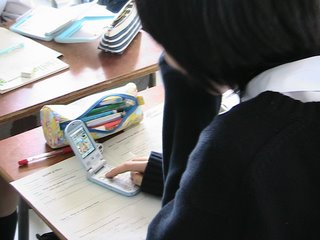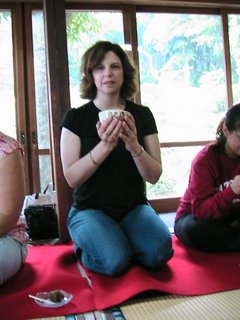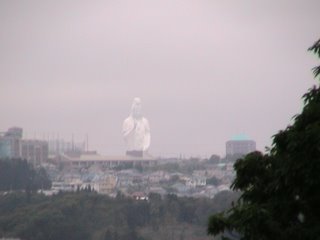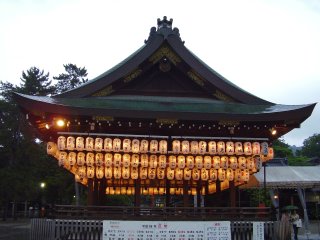




Friday, June 23, 2006: We went to Kesennuma Senior High School today. As I said before, high school is not mandatory, but 98% of Japanese children attend. Of those, 40% go to two year schools afterwards, 40% go on to four year universities, and 20% go on to work.
Two years ago, an all girls’ school merged with an all boys’ school. The girls came to the boys’ building. The girls had worn uniforms at their former school, the boys had not. So, the compromise was that the boys already at the school could continue to wear street clothes while the girls continued to wear uniforms. The 3rd year male students (seniors to us) were the only ones that are now left in the school without uniforms.
Students are supposed to wear an official school uniform to school and continue to wear it throughout the day. They are also not supposed to use cell phones in class. The paradox is that, if they do text during class or wear a t-shirt over their uniform, the teacher does not say anything.
There were 40+ students in every class. There were no behavior problems in any of the classes I observed. However, as I said there were students using their cell phones (not talking on them – just texting or playing games) and some were sleeping. Again, it seems that the culture does not include correcting the behavior of students that do not follow the rules.
As in junior high, all students are required to participate in an after school activity. These activities range from Judo to soccer to music to home economics. They stay after school anywhere from one to three hours. Some students live over one hour away by train – so they don’t get back home until 7:00 p.m. or after. They also have to participate in their club activities on Saturdays as well.
I was able to observe Japanese archery and Judo. In fact, my 16 year-old host sister came up to me at Judo class and introduced herself. She was so cute, she said, “you must be Elissa Banas.”
Teachers are required to advise an after school activity and they get paid very little extra for their time. Just as in the other two schools, all teachers are at school from 10-13 hours a day.














































